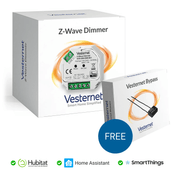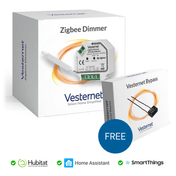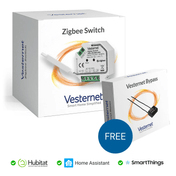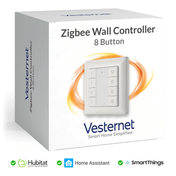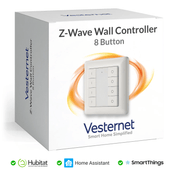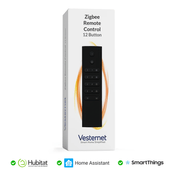Modern homeowners face an overwhelming challenge when attempting to create whole home automation systems. Most begin with isolated smart devices—a video doorbell here, a smart thermostat there—only to discover these components operate in silos, requiring multiple apps and offering limited integration capabilities. This fragmented approach leads to frustration, wasted investment, and systems that fail to deliver the seamless automation experience homeowners envision.
Strategic planning transforms this chaotic landscape into cohesive, powerful automation ecosystems. By approaching smart home system installation with comprehensive design principles, homeowners can create complete home automation systems that deliver enhanced convenience, robust security, optimised energy efficiency, and genuine long-term value. Proper system architecture ensures devices communicate effectively, automate complex routines, and adapt to changing household needs.
This guide provides comprehensive coverage from foundational planning through advanced implementation strategies. We'll explore system architecture fundamentals, component selection methodologies, integration approaches, and practical implementation techniques that enable homeowners to build truly unified smart home environments that grow intelligently with their evolving requirements.
Understanding Whole Home Automation Fundamentals
Whole home automation systems represent a fundamental shift from individual smart devices toward integrated ecosystems where components work together seamlessly. Unlike isolated smart products that operate independently, comprehensive automation creates interconnected networks where lighting, security, climate control, and entertainment systems share information and coordinate responses automatically.
Key principles of integrated automation systems:
- Interoperability between devices from different manufacturers
- Scalability allowing gradual expansion without system replacement
- Unified control through single interfaces and applications
- Automated responses based on multi-sensor inputs and conditions
System-wide thinking prioritises communication protocols, central management capabilities, and future expansion potential over individual device features. This approach ensures your complete home automation system remains cohesive as you add new components, preventing the fragmentation that plagues many homeowner installations.

Strategic Planning: Assessing Your Home and Needs
Successful smart home system installation begins with comprehensive assessment of your property's unique characteristics and household requirements. This foundational analysis prevents costly mistakes and ensures your automation investment delivers maximum value through targeted functionality that matches your lifestyle patterns.
Essential assessment areas:
- Room-by-room functionality requirements and usage patterns
- Existing electrical infrastructure and wireless coverage zones
- Household schedules and automation priority preferences
- Budget allocation across immediate needs and future expansion
Create detailed documentation of current pain points, desired improvements, and long-term automation goals. This strategic foundation guides component selection, ensures system coherence, and provides clear implementation priorities that align with your household's specific needs and preferences.

System Architecture and Hub Selection Strategy
Central hub selection fundamentally determines your whole home automation systems' capabilities, expansion potential, and long-term flexibility. Modern multi-technology gateways support multiple wireless protocols simultaneously, enabling integration of diverse device ecosystems under unified management platforms.
Evaluate hub capabilities based on protocol support breadth, processing power, local automation capabilities, and third-party integration flexibility. Consider whether centralised control through single powerful hubs or distributed processing across multiple specialised controllers better matches your system complexity and reliability requirements.
Critical hub evaluation criteria:
- Multi-protocol support including Zigbee, Z-Wave, and Wi-Fi compatibility
- Local processing capabilities for reliable offline automation
- Expansion capacity for growing device networks
- Professional integration options and third-party platform compatibility

Essential Component Categories and Selection Criteria
Complete home automation system success depends on selecting compatible, reliable components across core automation categories. Each device category serves specific functions while contributing to overall system intelligence through shared data and coordinated responses.
Primary automation component categories:
- Lighting control systems including dimmers, switches, and colour-changing capabilities
- Security sensors covering motion detection, door/window monitoring, and environmental alerts
- Climate control integration with smart thermostats and zone management
- Motorised controls for blinds, curtains, and other automated mechanisms
Prioritise components with proven reliability records, broad compatibility, and integration flexibility over single-purpose features. Select devices that support your chosen protocols and offer sufficient configuration options to adapt as your automation requirements evolve.
Integration and Interoperability Planning
Seamless integration transforms individual smart devices into cohesive whole home automation systems that respond intelligently to complex conditions and user preferences. Protocol standardisation ensures reliable communication, while thoughtful scene programming creates automated responses that genuinely enhance daily living.
Focus on creating logical automation scenes that combine multiple device categories into coordinated responses. Evening routines might dim lighting, adjust temperature, and activate security systems simultaneously, while morning sequences could gradually increase lighting, open blinds, and provide weather updates.
Integration best practices:
- Standardise on compatible protocols across all major device categories
- Plan automation scenes that leverage multiple sensors and controls
- Implement redundant communication paths for critical systems
- Test integration thoroughly before expanding system complexity
Phased Implementation Strategy
Methodical implementation prevents overwhelming complexity while ensuring each system phase delivers immediate value. Begin with foundational components that provide core functionality, then expand systematically based on experience and evolving requirements.
Recommended implementation sequence:
- Central hub installation and basic connectivity establishment
- Core lighting and security system deployment
- Climate control integration and energy management features
- Advanced automation scenes and convenience enhancements
Maintain detailed documentation throughout installation phases, including device configurations, scene programming, and troubleshooting notes. This documentation proves invaluable for system expansion, maintenance, and optimisation as your smart home system installation matures.

Advanced Automation and Scene Programming
Sophisticated automation leverages multiple sensors, timers, and conditional logic to create truly intelligent responses that adapt to changing conditions and user behaviour patterns. Advanced scene programming transforms static device control into dynamic, context-aware automation that anticipates needs and optimises performance automatically.
Develop multi-condition triggers that consider time, occupancy, weather conditions, and system states when executing automated responses. Energy optimisation routines can automatically adjust heating, cooling, and lighting based on occupancy patterns, external conditions, and utility pricing schedules.
Advanced automation capabilities:
- Adaptive learning systems that optimise based on usage patterns
- Multi-sensor conditional logic for intelligent responses
- Energy management automation tied to utility rates and weather
- Cross-system integration enabling complex scene coordination
Future-Proofing and System Evolution
Successful complete home automation systems evolve gracefully as technology advances and household needs change. Design system architecture with expansion capabilities, upgrade pathways, and compatibility considerations that protect long-term investment value while enabling seamless integration of emerging technologies.
Monitor industry developments in automation standards, emerging protocols, and integration capabilities that could enhance your system's functionality. Plan regular system reviews to identify optimisation opportunities, outdated components requiring replacement, and expansion possibilities that could deliver additional value.
Future-proofing strategies:
- Select hubs and components with active development and update support
- Implement flexible architecture accommodating emerging standards
- Maintain upgrade budgets for periodic system enhancement
- Document system configurations for seamless expansion planning
Building Your Smart Home Success
Strategic whole home automation systems planning delivers transformative benefits through enhanced convenience, comprehensive security, optimised energy efficiency, and substantial long-term value. Proper system design prevents the frustration and wasted investment that characterise fragmented approaches, creating cohesive automation ecosystems that genuinely improve daily living experiences.
Successful implementation begins with understanding foundational principles, conducting thorough planning, and selecting compatible components that work together seamlessly. By following systematic approaches to assessment, architecture selection, and phased deployment, homeowners can create sophisticated automation systems that grow intelligently with changing needs and emerging technologies.
Ready to explore comprehensive automation solutions for your smart home? Vesternet's extensive collection of professional-grade automation components includes multi-technology gateways, intelligent sensors, lighting controls, and motor controllers designed to work together seamlessly. Browse our curated selections to discover how expert guidance can help you build a truly integrated smart home system that grows with your needs. For convenient scene control throughout your home, explore our range of wireless remote controllers that offer customizable automation at your fingertips.










